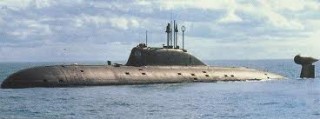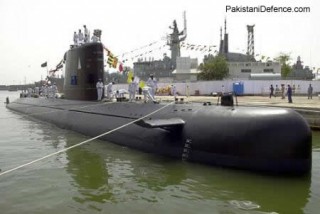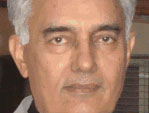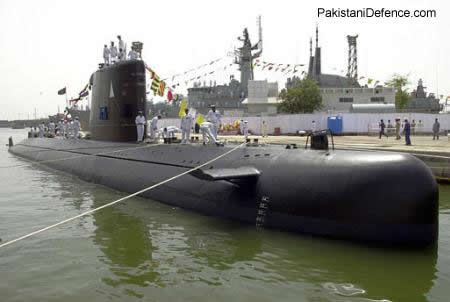Defence & Diplomacy
By Raja G Mujtaba

“The persistence of unresolved regional conflicts makes nuclear weapons a powerful lure in many parts of the world—to intimidate neighbours and to serve as a deterrent to great powers who might otherwise intervene in a regional conflict.” Henry Kissinger
[youtube 1jxl1eK8eNY]
Whenever any country acquires some ambitious role, be its own or playing proxy to some bigger power like the USA; it changes the dynamics of the region. Till the late 70s, India solely focused on Pakistan but thereafter it was prompted up by the USA to counter China. Whatever India acquires under this pretext would be free to use against Pakistan. To meet the threats, Pakistan is acquiring what it needs for an effective deterrence.
In May 1998, India exploded nukes thereafter, India’s language and tone changed immediately. Vajpai began to threaten Pakistan, some of the words still echo in our ears but within days, Pakistan demonstrated her nuclear capability that was superior to that of India. It brought a gloom over the Indian sky.
This initiative brought US sanctions against Pakistan that she faced with determination to overcome the difficult times.
One of the fundamental objectives of the US to move into Afghanistan was to isolate Pakistan from China and take out her nukes. To that end all sorts of pressures have been applied on Pakistan to destabilise her in every possible way. This has been no easy time; every day brought new threats that Pakistan had to face. Internally through media manipulation and political pawns, the public perception against Pakistan Army took new dimensions. Here some mismanagement by the army leadership cannot be ruled out. This perception became very dangerous; a gulf had been created between the public and the army that had to be bridged. To overcome this perception, army leadership went very cautious and it did succeed.
Then post 9/11 America showed a major tilt towards India, declared her as a strategic ally and treaties signed to that effect. Pakistan was declared as the frontline state to counter so called terrorism where Pakistan was made to suffer heavily through her economy, human loses and political destabilisation. India was not only given lucrative contracts but also was provided room to establish herself in Afghanistan.
During this period, besides civilian nuclear technology, India was also offered massive defence hardware including fighter aircraft and strategic air transporters. Taking advantage of the situation, India extended its reach and dominance even beyond the region.
Recently, Obama announced the new US policy to contain China that resulted in a shift from Atlantic to Asia-Pacific and Indian Ocean known as the Pacific Club. This club has the US, UK, Australia and other NATO members where India has also been given a role. Only time would tell if India remains a committed member of the Pacific Club but through this club it will acquire what it needs to dominate the region and work on its expansionist agenda – Hindutwa Manifesto.
India on the pretext of Chinese threat core philosophy of dominating the Indian Ocean to dominate the world is spending on her military muscle that is very threatening for the region, more so for Pakistan with which it has open and declared hostility. Under this doctrine, the major shift has come in her naval fleet where it has acquired nuclear submarines to extend its reach and dominance not only over the region but to some extent in the global context.
Pakistan Navy has never been adverse to the situation or the new developments taking place, she kept augmenting her fleet through up-gradations and modifications. Some are known but most are kept as operational secrets.
The development of nuclear weapons and its delivery systems were effectively integrated within the Pakistan Navy; even without nuclear submarines, Pakistan Navy has developed sub-surface nuclear strike capability that can engage targets both on sea and land. In spite of this, to maintain an edge, the need to acquire nuclear submarines cannot be ruled out for its obvious strategic advantages.
In the 60s, India had only one aircraft carrier, Vikrant an old vintage that could not pose any threat to Pakistan both in 1965 and 1971 wars; instead it was a liability for the Indian navy to hide and protect it from a smaller but more aggressive Pakistan Navy. In 1965 war, Pakistan Navy was the only navy in the region that had submarine capability that was utilised effectively. In 1971 war though India had acquired Russian Foxtrot class submarines but did not play any role of significance. Now with the new developments, Pakistan Navy is making all efforts to maintain her over half a century dominance of the sea.
After the collapse of Soviet Union, it was an opportunity for India that it acquired INS Vikramaditya that is expected sometimes this year. Indian navy that has INS Viraat is decommissioning it after the induction of the first domestically built Vikrant class aircraft carrier.
Besides acquisition of the aircraft carriers, Indian navy has also acquired nuclear powered submarines; the first of Akula II Class has already been handed over to the Indian Navy to augment its fleet of 14 diesel electric powered submarines (4 Shishumar and 10 Sindhugosh class submarines) and a dozen midgets known as chariots.
Indian navy as mentioned by Commander M Azam Khan in his article S-2 Options For Pakistan launched INS Arihant SSBN, ATV based on Kilo class Russian submarines. An indigenous effort that is currently undergoing trials is said to be facing some problems with its reactor.
Nuclear submarines have glaring advantages over conventional diesel electric powered that are as follows:
- A nuclear submarine is a strategic weapon that gives a navy the unique strategic advantage over its adversary to attain strategic goals.
- The nuclear subs are truly independent AND CAN OPERATE UNDERWATER FOR MONTHS UNLIKE CONVENTIONAL SUBMARINES THAT HAVE LIMITED ENDURANCE BELOW SURFACE.
- The nuclear reactor allows it to operate at high speeds for SUSTAINED PERIODS
Akula class nuclear submarine is officially deemed Project 971 Shuka B designed as follow-up to Victor and Sierra classes to set a new standard in stealth operations and serve as the vanguard of the modern Russian Navy. Some analysts opine that Akula is superior to American Los Angeles class (that was US Navy’s hallmark) but not being disclosed by the Russians.
Like the shark, this Russian machine is a deadly killer that needs very little reaction time. According to the available information, it attains underwater speed of 35 knots or more and can sit at 500 meters below water.
Its weapons configuration is formidable that it can singularly take on multiple targets without being located. It carries a mix of nuclear and conventional weapons. But her weaponry is only meant for sea warfare and not hitting the land targets. If modified, it can also launch nuclear attack on land based targets.

Pakistan that has a total compliment of 7 submarines comprising of Agosta 70s and 90s, would not only be outnumbered but also put on the back foot. In conventional weaponry, French and Germans are leading builders of submarines; by opting for French Agostas, Pakistan had maintained her parity over others in the region that is now threatened with the induction of Akula II nuclear submarines.
A diesel-electrical submarine has to surface to periscope depth to recharge the batteries using the diesel engine, leading to increased risk of detection. The MESMA air-independent propulsion system, being fitted to the Agosta 90B submarines for Pakistan, allows the submarine to remain submerged three times longer.
The MESMA system consists essentially of a turbine receiving high-pressure steam from a combustion chamber, burning a gaseous mixture of ethanol and liquid oxygen. The Agosta 90B’s dimensions remain the same in all other respects, except that the length increases from 67m to 76m and submerged displacement from 1,760t to 2,050t.
In future conflicts, it is very likely that even Israel would also conduct a covert operation in tandem with India to take out Pakistan’s nukes; an opportunity that it has always been looking for in the past.
Therefore the options of the bigger powers become the compulsion of the smaller countries that find themselves in catch 22 situation but with calculated measures, such adverse situations can always be averted. Pakistan defence forces have such a history to back them up.
On this, S M Hali conducted a lively debate in his weekly episode of Defence & Diplomacy with Vice Admiral Ahmed Tasnim and Advocate Tariq Peerzada.
*Quoted by Commander M Azam Khan in his article S 2 Options for Pakistan
[youtube ]

After graduating from college, I joined Pakistan Army and was commissioned in a Tank Regiment. I am a veteran of the Indo-Pakistan war. After leaving the Army, I joined IT as a profession. I was hired by Kuwait Air Force And Air Defence as an Adviser to computerize its entire operation. Here I was the Chief Coordinator of the Project, Kuwait Automated Support System (KASS). It was a state-of-the-art leading-edge technology where we established over 500 online terminals network with dedicated voice and data communications. It had Satellite linkups to connect with other systems and track the inventory movement for KAF & AD. On this project, I was coordinating with the US Navy, IBM World, AT&T, and Martin Marietta for the development, deployment, and operation of the KASS. Writing has always been a passion for me, been writing for 25 years for various newspapers and periodicals. Now for the last four years, I have formed my virtual Think Tank, Opinion Maker. Here we have some renowned writers from Pakistan and abroad who contribute regularly that’s helping the world opinion in some way. I am a keen golfer may not be a good one but play on a daily basis. I am also fond of using the camera to picture nature and people.
ATTENTION READERS
We See The World From All Sides and Want YOU To Be Fully InformedIn fact, intentional disinformation is a disgraceful scourge in media today. So to assuage any possible errant incorrect information posted herein, we strongly encourage you to seek corroboration from other non-VT sources before forming an educated opinion.
About VT - Policies & Disclosures - Comment Policy




